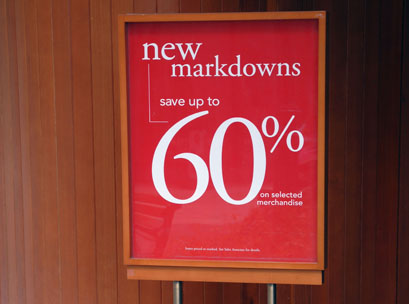Retail is plagued by discounting, and the reason for that is because retailers have ignored the paradoxical ‘law of more’. The more roads you build, the more cars you have, because you incentivise car travel. The more you reward participation, the more you get ‘mere participation’ because you devalue winning. The more sterile your environment, the more susceptible you are to disease, because you ‘incentivise’ the powerful bugs. Is there a pattern there? Consider education: By
making more education freely accessible, it has become worthless.
Internet tycoons promoting dropping out of college is not a sign of a society that values education. Homeschooling is growing. STEM education is struggling, while the intellectual equivalent of flower-arranging classes flourish.
We are actually getting dumber. Literacy rates are declining. Though difficult to quantify definitively, educational progress has stalled, despite it being freely available in most developed countries.
More education should lead to more educated people. But the paradoxical impact of the law of more, is that the more freely available you make education, the more diluted it becomes.
Retailers have been living on a diet of discounts for a long time. The intention was to make people aware of the value of the offer, but paradoxically they have become immune to it.
We used to say that discounts have become so common that people started to expect them, but in fact, discounts have become so common that people don’t even recognise them.
We encouraged consumers to become less discerning. We incentivised cheapskates, so we got cheapskates. But there is a fix.
Some people argue that the horse has bolted and that we will never be able to re-educate the customer. It is true that retailers will never succeed to do this in a coordinated manner.
But we don’t have to, because the market is doing it for us.
Consider the retail formats that are growing are luxury (higher end niche markets) and experiences (services and food). We can learn from this.
If consumers don’t (or can’t) discern the value of products, we have two options:
stop selling ‘products’
don’t compete on dollar value
Stop competing on price
Low margin businesses demand high turnover, which means there are rarely more than a handful (often one or two) ‘winners’ per category. Discounting is indeed a race to the bottom, and the winners (like Costco, Walmart, Amazon) are already emerging.
The curve is your enemy or your friend. Consider a product with a gross margin rate of 50 per cent. If you discount that by 20 per cent, you have to sell 66 per cent more by volume to recoup the lost margin dollars.
Price competition is a lazy form of retailing. Although to be fair, there is a time and a place for discounting to manage cashflow or to buy marketshare.
Servify your products
Two of the smartest business model pivots are to productise your service and to servify your products.
Take a leaf out of the software industry’s book. Instead of selling software products on CD ROMs, they developed software-as-a-service.
One traditional retailer already going down this path is Patagonia. Look deeper than the company’s well-known don’t-buy-this-shirt narrative, and really understand their business model.

